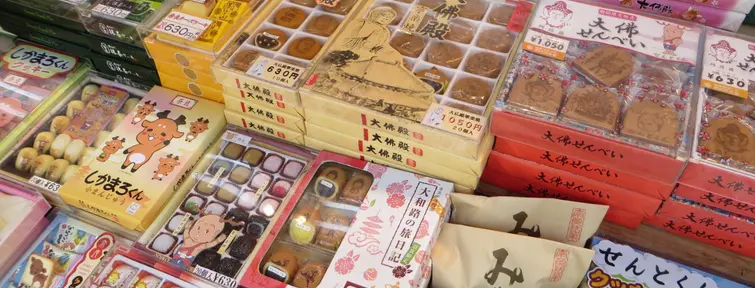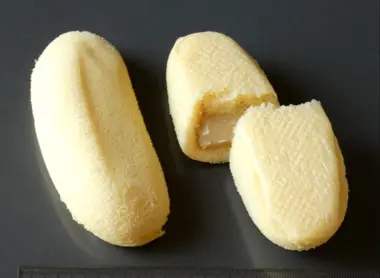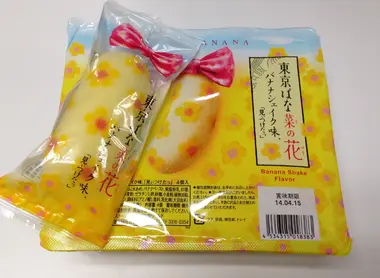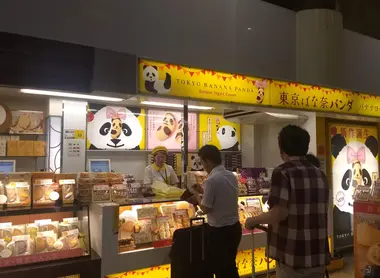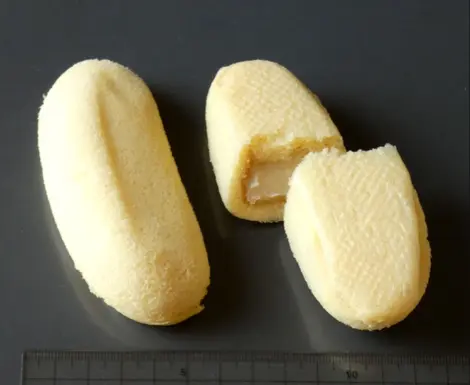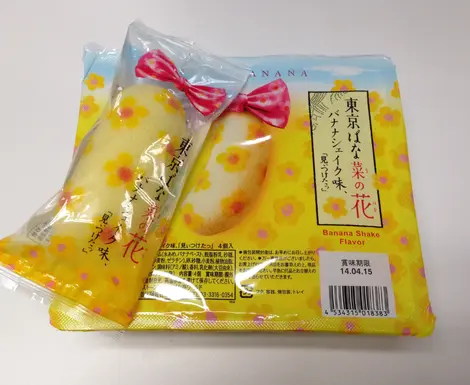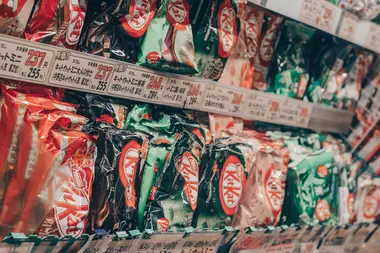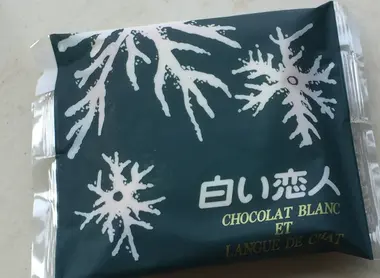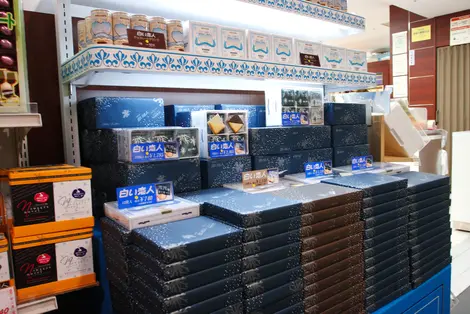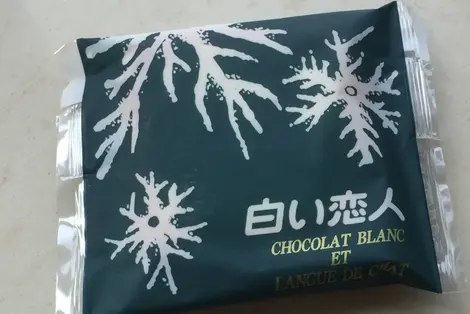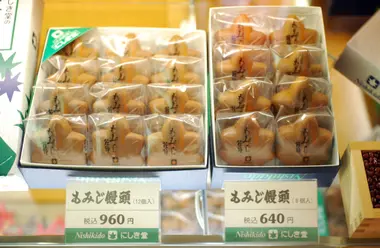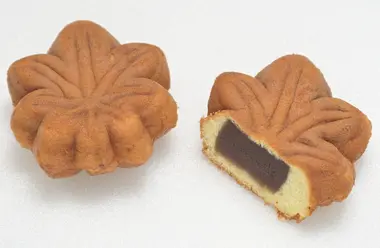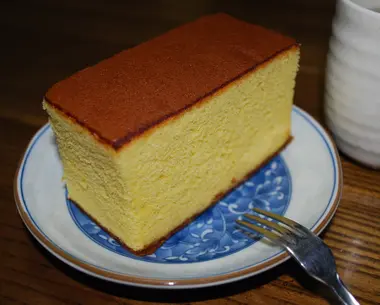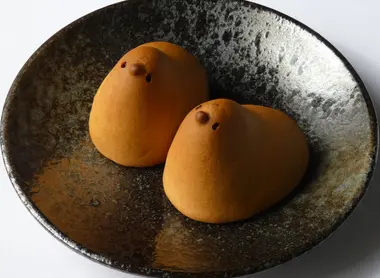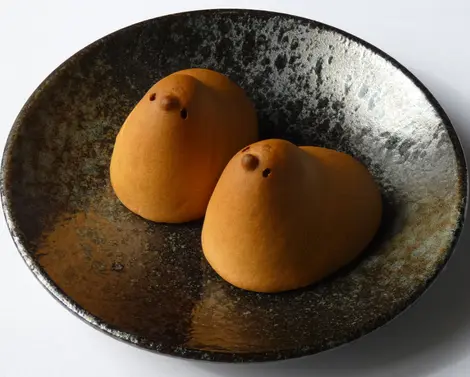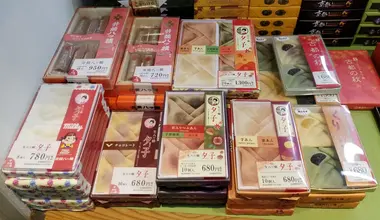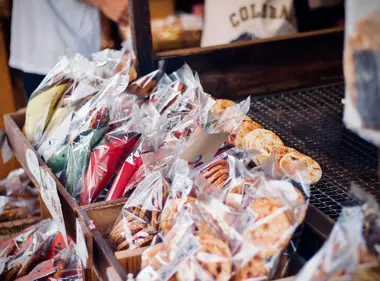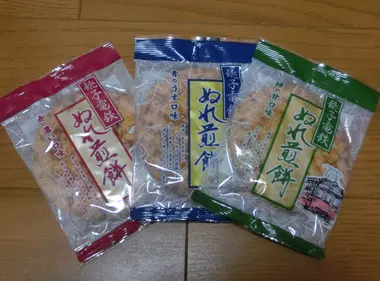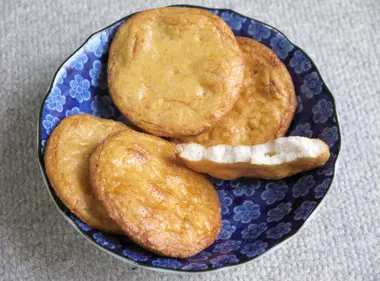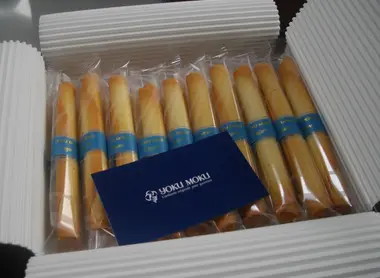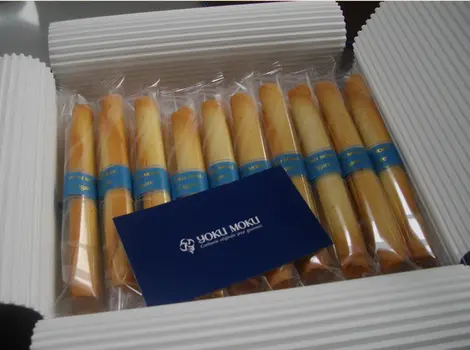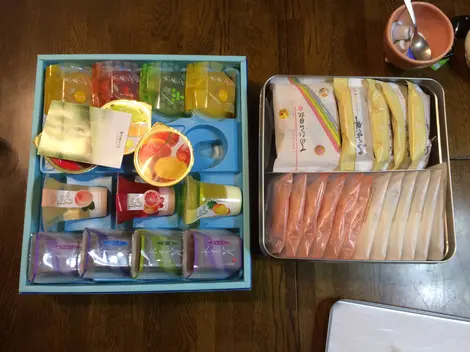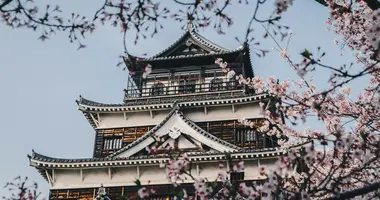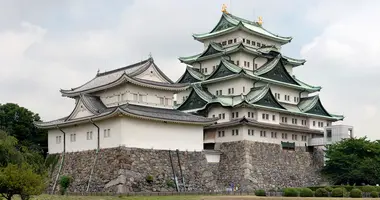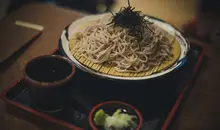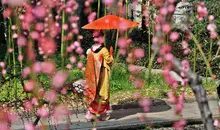Omiyage: What are they and what are the best to get?
- Published on : 04/01/2025
- by : Lucie G.
- Youtube
In Japan, the word "omiyage" refers to a souvenir brought back for loved ones and colleagues.
Omiyage (お土産) means "souvenir" in Japanese, more specifically "local specialty" or "souvenir bought as a gift on a trip". This "souvenir" does not have the same meaning as in the West. In Japanese culture, omiyage is not a souvenir for oneself, but a gift for others. It usually comes in the form of a box of snacks found in souvenir stores in Japanese stations, tourist attractions and airports. Typically, while waiting for your train or plane, you wander around these stores looking for the box that will convey the essence of your trip to others.
There are hundreds of boxes of cakes, sweets and chocolates, often featuring local specialties or products made from local ingredients. Some brands are more popular than others, so here we present the best-known and best-loved omiyage !
Tokyo Banana
Tokyo Banana are soft, banana-shaped cakes made from a spongy cake filled with banana-flavored custard. They're Japan's most popular omiyage, among Japanese and travelers alike. You'll find them in several Tokyo train stations (Ueno Station, Tokyo Station, Shinjuku Station...) and the country's main airports (Narita, Haneda, Kansai...), specifically in souvenir stores and Tokyo Banana stands. Tokyo Banana come in a variety of flavors (honey, chocolate, sakura...), each with its own cute design. What's more, there are even Pokémon versions of the famous cakes, with a Pikachu represented on the cake, or even Doraemon versions.
Kit Kat
A must-have for any trip to Japan. Originally British, Kit Kat has become the symbol of omiyage in Japan. Their popularity stems from the Japanese pronunciation game with the brand name, "kitto katsu", which means "you'll succeed without a doubt".
They then become the preferred omiyage to give to pupils and students during their exam periods as a gesture of encouragement. For lovers of Japan, it's the profusion of Kit Kat flavors that attracts them. Matcha, strawberry, hojicha, caramel... In addition to these "classic" flavors, Kit Kat often offers limited editions such as collaborations with Japanese brands Tokyo Banana and Rilakkuma, or seasonal editions, such as sakura, peach, sake and plum flavors in spring. These special collections are usually linked to Japanese specialties and customs, making them a treasure trove for many travelers!
Shiroi Koibito (Hokkaido)
Shiroi Koibito, literally "white lovers", are one of Japan's most popular omiyage. These are two cat's tongues filled with white chocolate, made by the Japanese pastry brand Ishiya. As well as being very tasty, the boxes in which the cakes are presented are pretty blue and white boxes made of reusable scrap metal. The lid features a magnificent photo of the volcanic island of Rishiri. Shiroi Koibito come from Hokkaido, and while they were originally available only on their island of origin, these cakes can now be bought all over the archipelago!
Regional specialities
In most Japanese station souvenir stores, you'll find a wide variety of products made from the specialties of the region you're visiting. In Kyoto, you'll find plenty of matcha-related products, while in Tottori, the nashi pear is showcased through a variety of sweet and savory cakes, drinks and much more. The city of Aomori is famous for its apple orchards, so you'll find plenty of apple-based omiyage. This strategy of showcasing regional specialties based on omiyage is adopted in many small prefectures, with the aim of making themselves attractive to travelers. Don't hesitate to ask about the prefecture you're visiting to find out more about their specialties!
Momiji Manju (Miyajima)
The specialty of the island of Miyajima, near Hiroshima, are momiji manju, maple-leaf-shaped cakes filled with azuki bean paste. Momiji means maple in Japanese and is the symbol of Hiroshima, Miyajima's neighboring city. Usually eaten in autumn, this cake has become so popular that it is now available in omiyage boxes, in souvenir stores at railway stations and airports. It is even filled with flavors other than red bean paste, for those who prefer chocolate, matcha or cream cheese.
Kobe Pudding
Kobe pudding is THE souvenir to bring back from the Japanese port city. Japanese puddings are famous for their comforting sweetness. This pudding, with its lemony, vanilla notes, can be bought in souvenir stores in Kobe's train stations, and comes individually in plastic jars. The clear advantage of this pudding (unlike those you can buy in konbini) is that it can be stored at room temperature for up to six months. So it's very practical to take back home, as long as you put it in the hold!
Nagasaki Castella
Castella has its origins in Portugal. It was introduced to Japan during the Muromachi period by Portuguese missionaries in Nagasaki, the international port of the time. This very simple cake, made from eggs, sugar, flour and malt syrup, is renowned for its light, fluffy texture, similar to a sponge cake, as well as its brown exterior and yellow heart. The Japanese have taken to offering Castella as an omiyage to wish them prosperity. Beware, however, that these cakes have a shelf life of no more than 10 days! They are available in many patisseries, as well as in station and airport stores.
Hiyoko (Fukuoka)
One of the most famous and readily available omiyage (as well as the cutest) is Hiyoko, a small cake shaped like a chick, as its name means in Japanese. The classic version is made with yellow bean paste (a mixture of white bean paste and egg yolks), flour and sugar. There are several small shops specializing in Hiyoko to be eaten on the spot in Fukuoka in particular, the city of origin, but otherwise you'll find them in cardboard boxes, from 5 to 35 chicks per box!
Yatsuhashi (Kyoto)
These triangular cakes made of cinnamon, rice flour and sugar take their name from a famous koto player named Yatsuhashi Kengyo, as the shape of the cake and the koto are very similar. There are two types, the rather soft, mochi-paste-like nama "crû" yatsuhashi and the crispy, steamed yatsuhashi. Both are traditionally filled with red bean paste, but chocolate and even jam fillings are also available. Omiyage boxes are usually made in two flavors (sweet potato - hazelnut, matcha - cinnamon) and are mainly brought back from their home town, Kyoto.
Senbei
Senbei, crispy puffed rice cakes, are very popular in Japan and can be found all over the archipelago. They come in a variety of shapes (round, rectangular, etc.), and the most common flavors are soy sauce, salt or shrimp. Some are fried or sweetened, so there's something for everyone! One brand worth mentioning is Kara Kara Senbei, which offers sweet senbei in the shape of a triangle, each containing a small toy. Most of the 150 toys are handcrafted and represent objects from Japanese folklore, such as denden-taiko (a small, colorful drum), tsuko tegata (a wooden plate used as a passport during the Edo period) and golden crane origami.
Our other recommended sweets :
- Yoku Moku cigars
- Malebranche matcha cookies
- Royce chocolate chips
- Frantz chocolate-covered strawberries
- Kibi dango from Okayama
- Zunda mochi, from Sendai
- Tochigi Lemon
Where to find omiyage?
You'll find souvenir stores in every major railway station, as they are often interwoven with shopping arcades and malls. You'll also find them in more secluded locations, but popular with travellers. So don't hesitate to check out the stations you pass through on your train journeys to find omiyage typical of the regions you pass through.
Here's a short list of places where you're sure to find omiyage:
Main stations:
- Tokyo station
- Osaka station
- Narita airport
- Haneda airport
- Kansai Airport
- All Shinkansen stations
Some tourist attractions :
- Tokyo Sky Tree
- Senso-ji (Asakusa, Tokyo)
- Osaka Castle
- Shopping streets (Ameyoko Market Street in Tokyo, Dotonbori Street in Osaka...)
